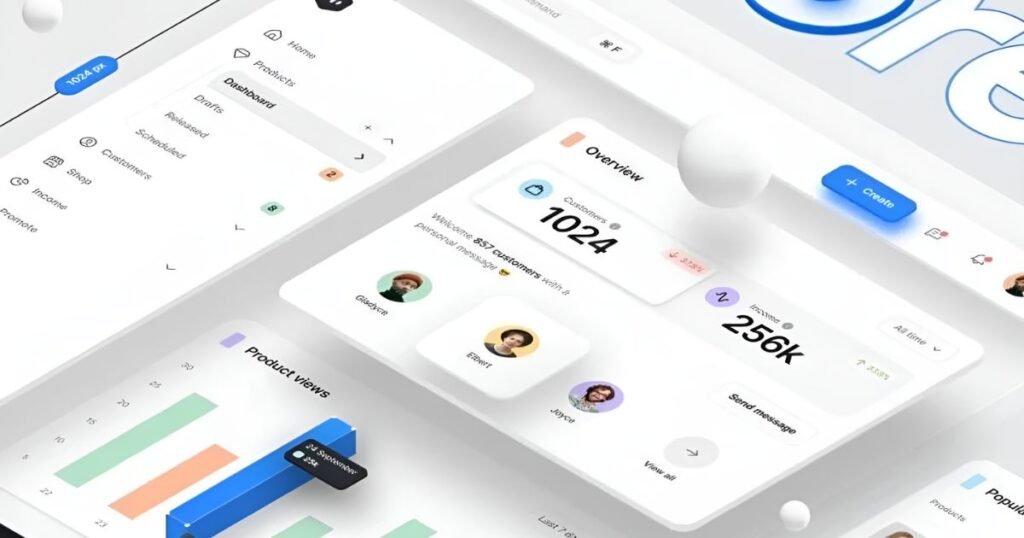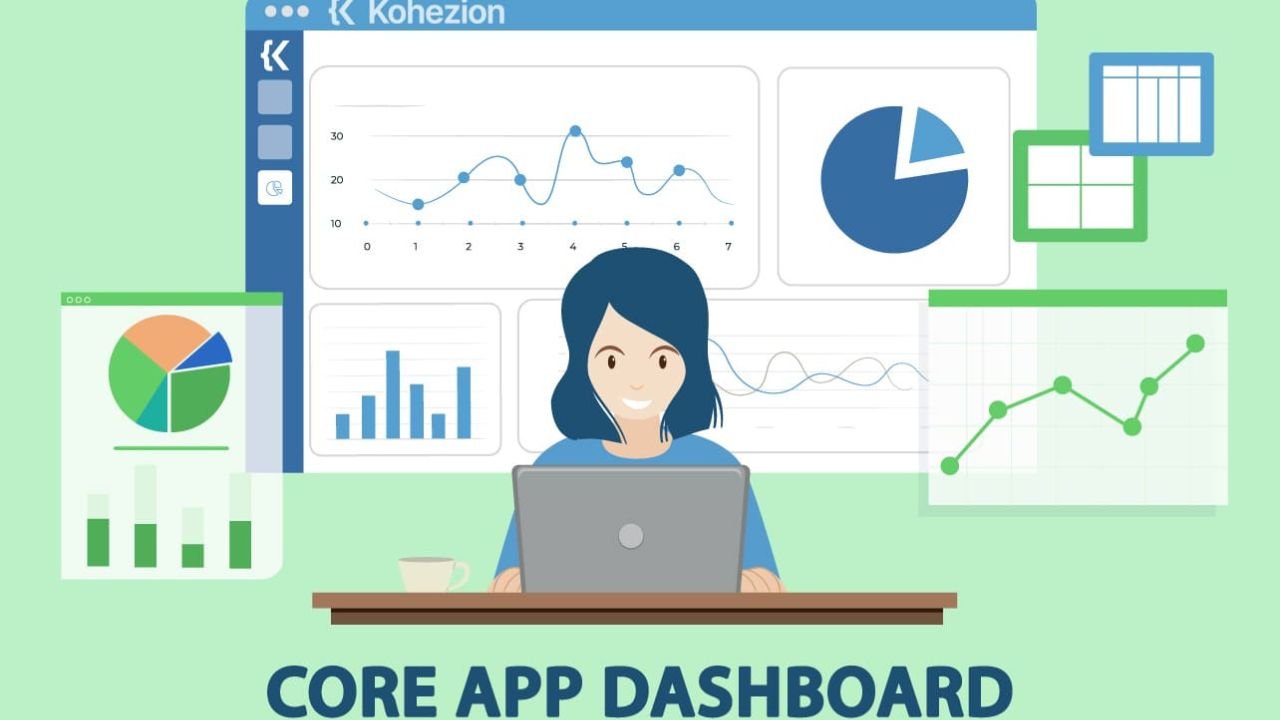A core app dashboard is a centralized interface that aggregates and displays key metrics, performance indicators, and data from various sources within an organization. It serves as a control panel, allowing users to monitor, analyze, and act upon information in real-time.
In today’s data-driven world, businesses generate vast amounts of information. A core app dashboard helps in making sense of this data by providing a clear and concise overview, enabling better decision-making and strategic planning. It ensures that stakeholders have access to the right information at the right time.
Key Features of a Core App Dashboard
Real-Time Data
Real-time data is the cornerstone of an effective core app dashboard. This feature ensures that the information displayed on the dashboard is up-to-date and reflects the current state of various business processes and metrics.
Importance
- Immediate Decision-Making: Allows users to make informed decisions quickly based on the latest data.
- Operational Efficiency: Enhances the ability to monitor and respond to ongoing operations without delays.
- Competitive Advantage: Businesses can react faster to market changes and operational issues.
How It Works
Real-time data integration typically involves connecting the dashboard to various data sources, such as databases, APIs, and other software systems. This integration allows for continuous data streaming and instant updates.
Customizable Interface
A customizable interface allows users to tailor the dashboard to their specific needs and preferences. This includes modifying the layout, selecting which metrics and data points to display, and choosing the types of data visualizations.
Importance
- User Relevance: Ensures that each user sees information that is most relevant to their role and responsibilities.
- Enhanced User Experience: Improves usability by allowing users to organize the dashboard in a way that is intuitive for them.
- Scalability: Supports various departments and teams within an organization by providing different views and customizations.
How It Works
Customizable interfaces often include drag-and-drop features, widget libraries, and personalization options. Users can rearrange elements, add or remove data widgets, and save their preferred dashboard configurations.
User Management
User management features allow administrators to control who can access the dashboard and what level of access they have. This includes setting permissions, creating user roles, and managing authentication.
Importance
- Security: Protects sensitive information by ensuring that only authorized users can access it.
- Data Integrity: Prevents unauthorized modifications to critical data and settings.
- Compliance: Helps meet regulatory requirements by controlling access to sensitive data.
How It Works
User management systems typically involve role-based access control (RBAC), where users are assigned roles that determine their access level. This can be managed through an admin panel where permissions are set and adjusted as needed.
Data Visualization
Data visualization transforms complex data sets into graphical formats such as charts, graphs, and maps. This makes it easier for users to interpret and analyze data at a glance.
Importance
- Clarity: Simplifies complex data, making it more accessible and understandable.
- Insight Discovery: Helps users quickly identify trends, patterns, and anomalies.
- Engagement: Interactive visualizations can make data exploration more engaging and intuitive.
How It Works
Dashboards often include a variety of visualization tools that can create different types of charts (e.g., bar, line, pie), geographical maps, heatmaps, and more. Users can interact with these visualizations to drill down into data or filter results dynamically.
Types of Core App Dashboards

Operational Dashboards
Operational dashboards are used to monitor the day-to-day operations of a business. They provide real-time data on key performance indicators (KPIs), helping managers to ensure that processes are running smoothly.
Analytical Dashboards
Analytical dashboards are designed for data analysis. They help in identifying trends, patterns, and insights from historical data, aiding in strategic decision-making and long-term planning.
Strategic Dashboards
Strategic dashboards provide a high-level overview of the organization’s performance. They are typically used by senior executives to track progress towards strategic goals and objectives.
Designing an Effective Core App Dashboard
User-Centric Design
A user-centric design ensures that the dashboard is intuitive and easy to navigate. This involves understanding the needs and preferences of the users and designing the interface accordingly.
Responsive Layout
A responsive layout ensures that the dashboard is accessible on various devices, including desktops, tablets, and smartphones. This enhances usability and ensures that users can access information on the go.
Data Prioritization
Prioritizing data is crucial for an effective dashboard. This involves determining which metrics are most important for the users and ensuring that they are prominently displayed.
Common Challenges and Solutions
Data Overload
One of the common challenges with dashboards is data overload. This can be addressed by focusing on the most critical metrics and using filters to drill down into specific data points.
User Training
Ensuring that users are adequately trained is essential for the successful implementation of a dashboard. This can be achieved through workshops, tutorials, and ongoing support.
Integration Issues
Integration issues can arise when connecting the dashboard with various data sources. These can be mitigated by choosing compatible tools and working closely with IT teams to ensure seamless integration.
FAQs
Ques. What is a core app dashboard?
Ans. A core app dashboard is a centralized interface that aggregates and displays key metrics, performance indicators, and data from various sources within an organization.
Ques. Why are core app dashboards important?
Ans. Core app dashboards are important because they provide real-time insights, enhance decision-making, and streamline business operations.
Ques. What are the key features of a core app dashboard?
Ans. Key features include real-time data, customizable interfaces, user management, data visualization, and integration capabilities.
Conclusion
Core app dashboards are essential tools for modern businesses. They provide real-time insights, streamline operations, and support strategic decision-making. By understanding their features, types, and best practices for implementation, organizations can leverage dashboards to drive success and stay competitive in today’s data-driven world.
